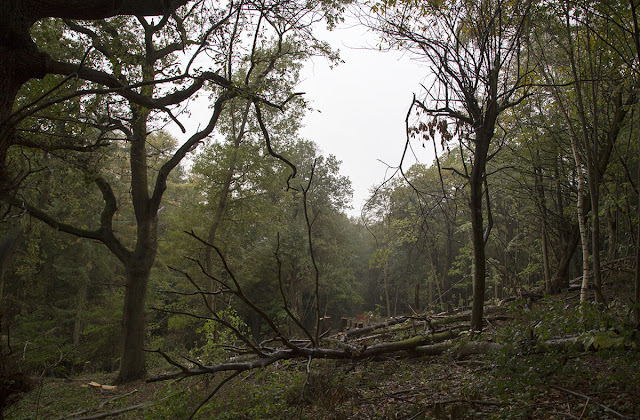 |
| Gully with fallen trees. Farningham Wood, 28 November 2013. |
I walked through Farningham Wood recently and came across a depression, a sort of dry gully, full of fallen trees. They had been there for a long while, perhaps since the storm of 1987, or perhaps they had fallen individually at various times, but none looked recent. A strange place.
I was watching out for late fungi, but saw very few. There were probably many more, but the fallen leaves will have covered some up, and also a single person always misses a lot compared to a group. The only fungus photo I came back with was this:
 |
| Ascocoryne sarcoides, Purple Jellydisc. Farningham Wood, 28 November 2013. |
I find it hard to resist taking a photo of this species, which looks like miniature intestines. This growth was about three inches across.
 |
| Broad Buckler Fern, Dryopteris dilatata. Farningham Wood, 28 November 2013. |
Not everything is brown. You can see some leafage in the top photo. And when there is less greenery, ferns stand out better, and there were a few of these Broad Buckler Ferns. They are tripinnate; the individual fronds branch three times.
At the top of a rise at the north end of the wood I saw a crudely made memorial seat.
 |
| Crude memorial seat. Farningham Wood, 28 November 2013. |
There were dedications on the oaks at either side, one of them quite old:
 |
| Dedication by crude memorial seat. Farningham Wood, 28 November 2013. |
The tree's bark has started to grow over the nail heads at the left of this one. So, roughly made, but apparently well constructed, and I expect that many people will have rested here. The slope up from the north is quite steep and there is plenty of undergrowth in other directions.











